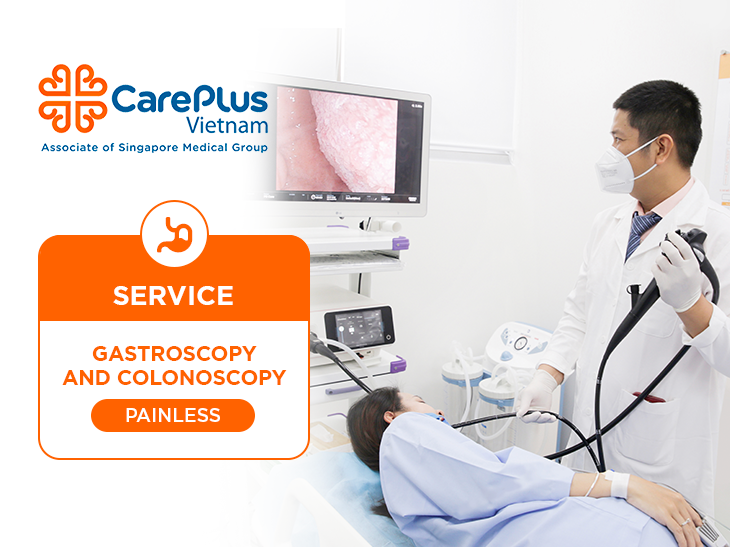Painless Colonoscopy And Gastroscopy Service

WHAT IS PAINLESS COLONOSCOPY AND GASTROSCOPY?
Painless Colonoscopy and Gastrocospy is an advanced and modern endoscopic technique, which addresses the shortcomings of traditional endoscopy.
Advantages of painless endoscopy
-
Pain-free experience: There is no sensation of pain, reducing anxiety. Patients do not experience discomfort, nausea, or the urge to cough or gag as with conventional endoscopy methods.
-
Precision: With painless endoscopy, patients remain still, ensuring clear and accurate images, facilitating the endoscopy process.
-
Safety: Depending on each specific case, the doctor will determine the appropriate dosage of sedative medication for short-term sedation, ensuring safety and not adversely affecting health. Pain-free endoscopy is recommended by the American Gastroenterological Association and endorsed by the Asian Pacific Association of Gastroenterology.
WHO SHOULD UNDERGO PAINLESS COLONOSCOPY AND GASTROSCOPY?
-
The recommended age for individuals at average risk to begin cancer screening with endoscopy is currently between 35 and 45 years old.
-
Having close family members (grandparents, parents, siblings) with gastrointestinal diseases such as esophageal cancer, stomach cancer, or colorectal cance, multiple polyps in the digestive tract.
-
Symptoms such as passing mucus or blood stools (especially if suspected of rectal cancer or colon cancer), unexplained weight loss, changes in bowel habits, anemia.
-
Abnormal findings on colonoscopy or ultrasound.
-
Intervention or follow-up treatment is required.
-
Engaging in unhealthy lifestyle and dietary habits, such as frequent smoking, alcohol consumption, eating a lot of fried foods, or consuming spicy foods.
-
Factors that increase the risk of gastrointestinal cancer, including the presence of polyps, suffering from stomach or colon ulcers, or being infected with H. pylori bacteria.
DISEASES DETECTABLE BY COLONOSCOPY AND GASTROSCOPY SERVICE
-
Evaluation of benign conditions in the lower digestive tract such as hemorrhoids, anal fissures, anal prolapse, ulcerative colitis, diverticulosis, irritable bowel syndrome, etc.
-
Screening for colorectal polyps and follow-up after treatment.
-
Gastroscopy can detect upper gastrointestinal conditions such as esophagitis, gastroesophageal reflux disease (GERD), achalasia, peptic ulcers in the stomach and duodenum, gastric and duodenal polyps, functional dyspepsia, and determine the presence of H. pylori infection.
-
It also screens for complications like esophageal and gastric varices in patients with cirrhosis, and examines precancerous lesions in the stomach such as atrophic gastritis and intestinal metaplasia.
|
NOTES:
|
Avoiding the use of blood thinners such as aspirin, clopidogrel, etc. This helps minimize the risk of bleeding during the surgical intervention. Patients should inform the doctors about any medications they are currently taking or have taken recently.